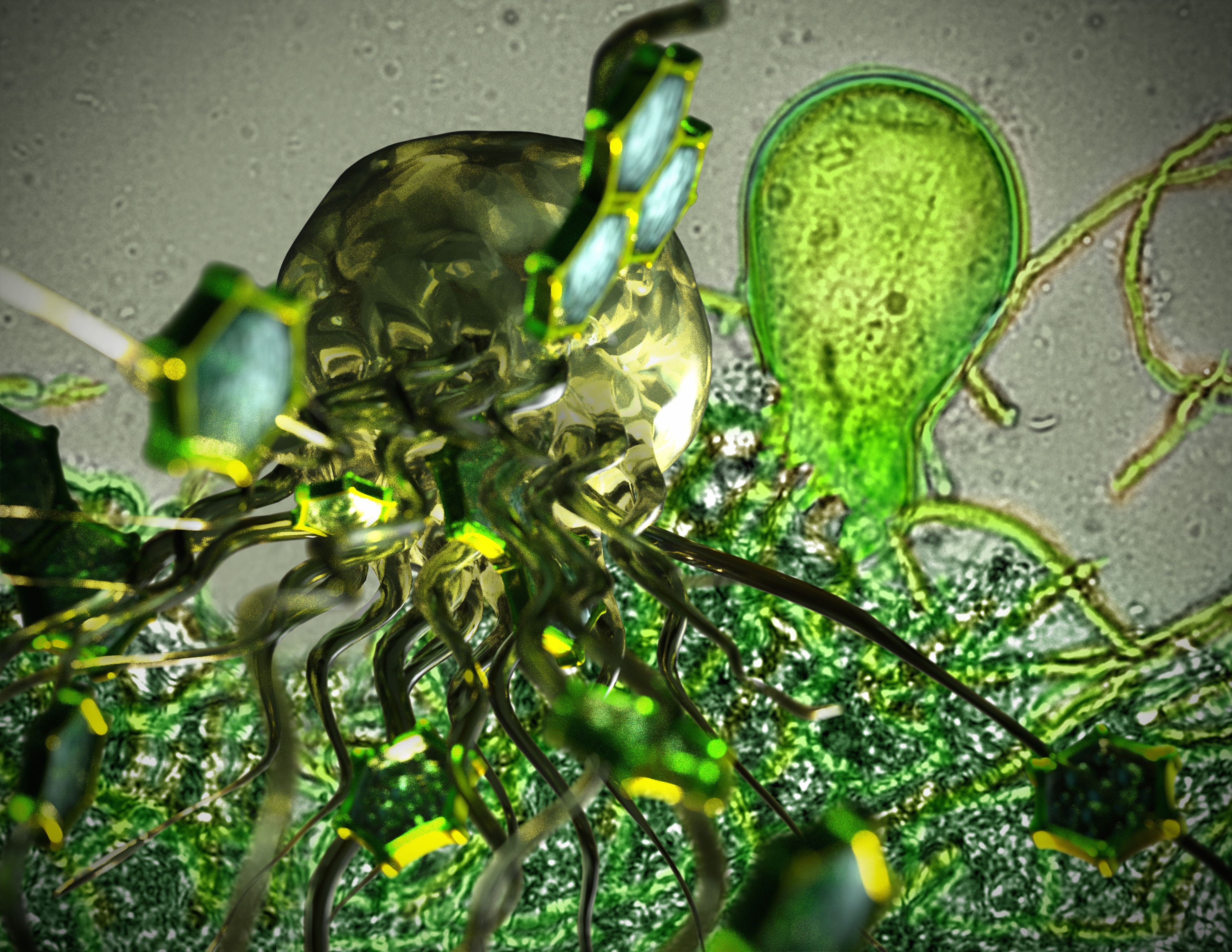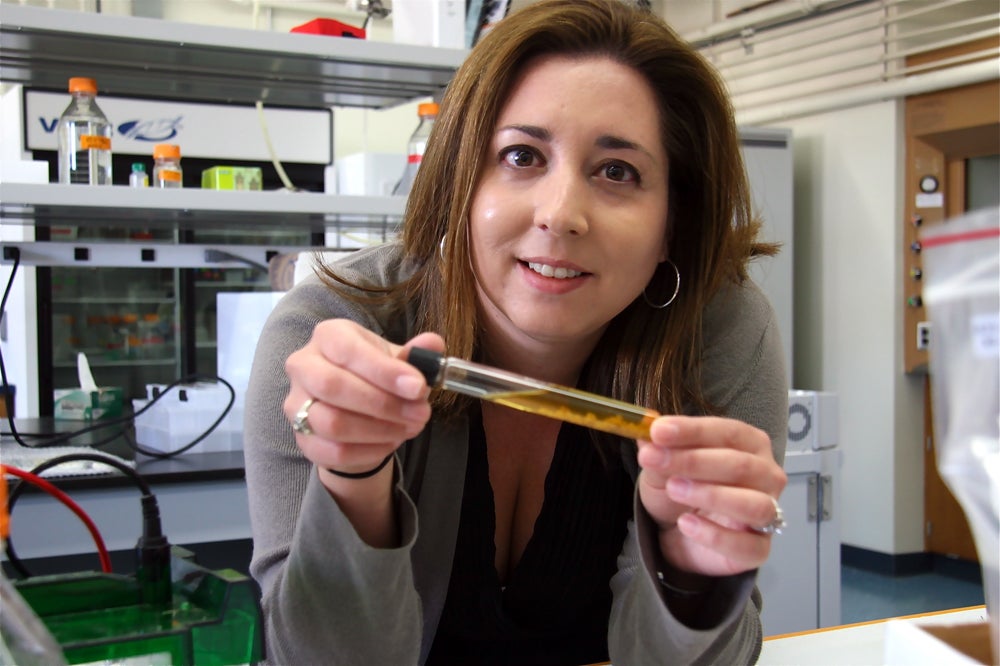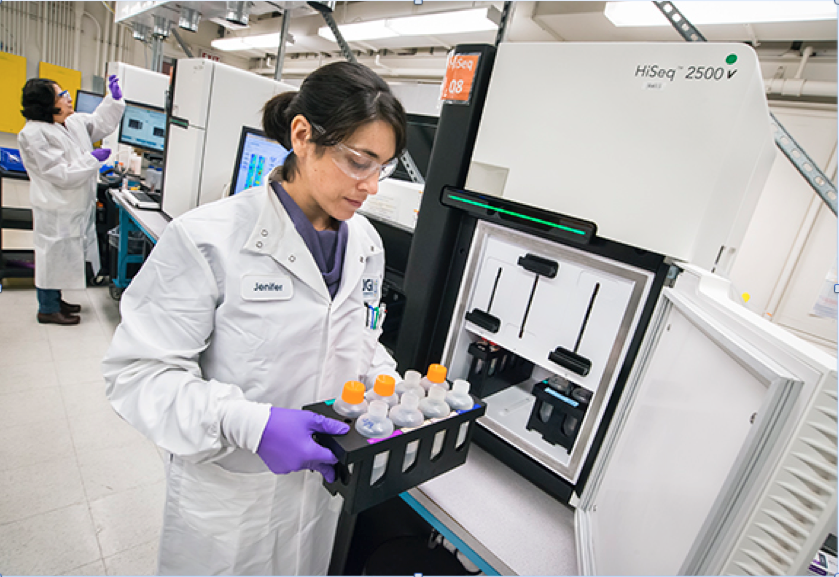A Primitive Advance
They’re among the oldest fungi on Earth, yet they could hold the keys to solving some modern problems: Anaerobic gut fungi, being studied by UC Santa Barbara chemical engineer Michelle O’Malley, have proven especially effective at breaking down plant material and unlocking sugars that can be processed into compounds that can be used in a variety of applications.
“We’ve gotten a global view into how these really old fungi work,” said O’Malley, corresponding author of a paper that appears today in the journal Science.
Found in the digestive tracts of large herbivores, these primitive fungi have evolved to break through lignin, a biopolymer that surrounds energy-rich cellulose and is found in denser concentrations in the non-food parts of plants such as the stems and roots, helping the animal derive energy from even the toughest of plant parts.
The large repertoire of unique enzymes secreted by these fungi can also convert cellulose and hemicellulose into sugars, and directly ferment those sugars into biochemicals that include biofuels. Surprisingly, these natural enzymes have comparable activity to those that have been highly optimized for industrial use.
Because of the difficulty in isolating and growing these fungi, however, relatively little is known about them. The task before O’Malley and her team, which included postdocs Kevin Solomon and Charles Haitjema, and doctoral students John Henske and Sean Gilmore, was to characterize these microbes and, especially, the enzymes they secrete in an effort to understand how they efficiently degrade plant material and convert the biopolymers within. To do this, they integrated new sequencing tools to capture different strains of fungi to dynamically tune their enzyme machinery to match challenges from their environment.
Through a collaboration with the Department of Energy (DOE) Joint Genome Institute and Pacific Northwest National Laboratory, the researchers were able to genetically sequence representative fungal strains, and molecularly sequence their large repertoire of novel enzymes. This study also involved research partnerships with the Broad Institute of MIT and Harvard, and Harper Adams University in the UK.
“The enzymes were the main entity we were after,” O’Malley said, “but in doing so we found other interesting things hiding in the fungi as well.”
By analyzing and matching the enzyme sequences, O’Malley and her team were also able to gain insight into the genetic mechanisms that control these enzymes, knowledge that can be used in the future to adjust what compounds may be produced from the cellulose extracted from the plants.
The potential applications of this research are significant. Currently, the biofuel industry relies primarily on food crops, which are easier to process for sugars to convert into ethanol. This creates a competition for space between crops grown for food and crops grown for fuel. Not only would efficient access to cellulose and hemicellulose in non-food parts of plants open up another source of renewable energy, it would also address the need for space.
Additionally, the new understanding of how the enzymes secreted by the fungi are controlled could pave the way for bioprocessing techniques that could result in the efficient production of advanced pharmaceuticals and other new chemicals derived from sugars.
More research is needed to understand how these anaerobic gut fungi work, especially in the context of their native microbial communities, said O’Malley, who has received early career awards from both the DOE and National Science Foundation to investigate the potential of anaerobic gut fungi. Given the power of the enzymes that O’Malley’s group discovered, this research offers a new path toward effective plant waste conversion to value-added chemicals.
“We’re still in development,” O’Malley said, “but we’re a significant step closer than we were before.”
Research on this project was supported also by the DOE’s Environmental Molecular Science Laboratory.






